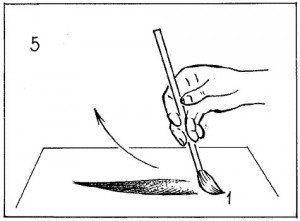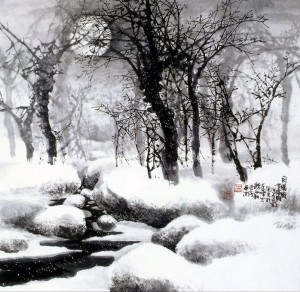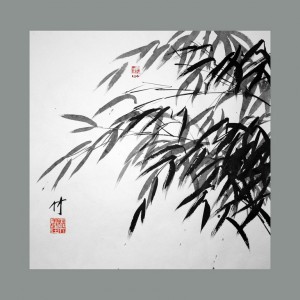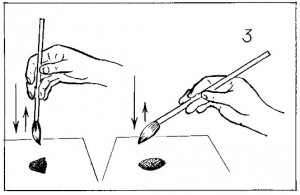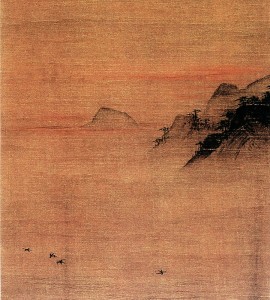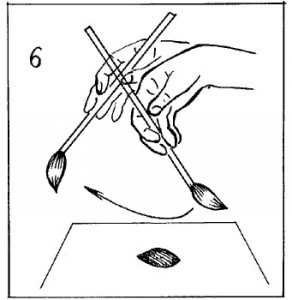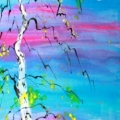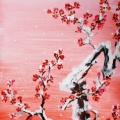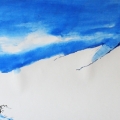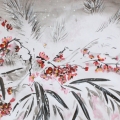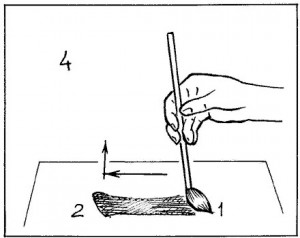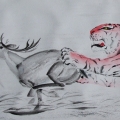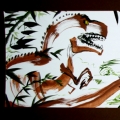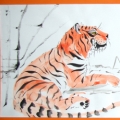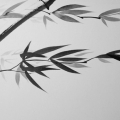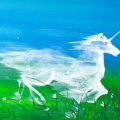Water in movement is incorporeal, just like the fire
movement. Where the metal movement acts as a June antipode to wood, the
water movement stands in opposition to the fire movement. Fire is
fleeting and elusive, whereas water is infinitely swirling and twisting.
It is the longest of all movements. The water movement resembles a
vortex that draws one’s attention deep inside.
The water brushstroke is like a burning incense trail. It is best suited for painting twisted trunks of bonsai trees, rose and peony flowers, weeds and water-plants, limbs, shells and bodies of mollusks, and a wood in the background with all its details blurred together.
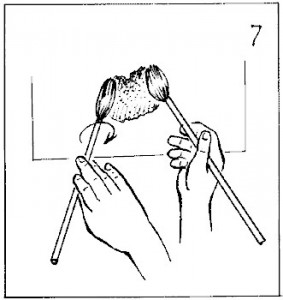
Water. The water element conveys the effect of ‘atmospheric perspective and diffusion perspective”. This technique is widely used in landscape painting. The foreground is rich in details and fine elements, while in the background the images are blurred and look like blotches and patches of color almost indistinguishable from each other. Paintings that employ this technique often evoke a sensation of diving into some hypnotic depth, which is the opposite of fire that causes outbursts of emotions. In some people “water” paintings stir up fear.
In the following paintings the compositional water technique is used to great effect. Paintings by a contemporary Chinese-Japanese artist Wang Noon are also a good example of the “water” style.
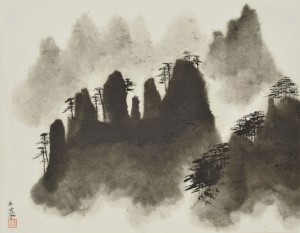
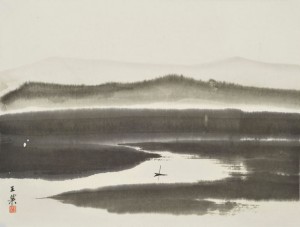
The water brushstroke is like a burning incense trail. It is best suited for painting twisted trunks of bonsai trees, rose and peony flowers, weeds and water-plants, limbs, shells and bodies of mollusks, and a wood in the background with all its details blurred together.

Water. The water element conveys the effect of ‘atmospheric perspective and diffusion perspective”. This technique is widely used in landscape painting. The foreground is rich in details and fine elements, while in the background the images are blurred and look like blotches and patches of color almost indistinguishable from each other. Paintings that employ this technique often evoke a sensation of diving into some hypnotic depth, which is the opposite of fire that causes outbursts of emotions. In some people “water” paintings stir up fear.
In the following paintings the compositional water technique is used to great effect. Paintings by a contemporary Chinese-Japanese artist Wang Noon are also a good example of the “water” style.


